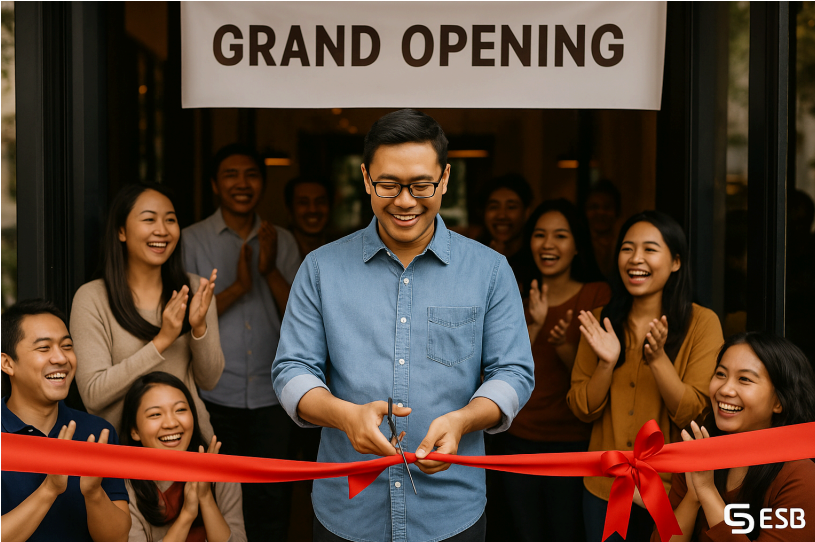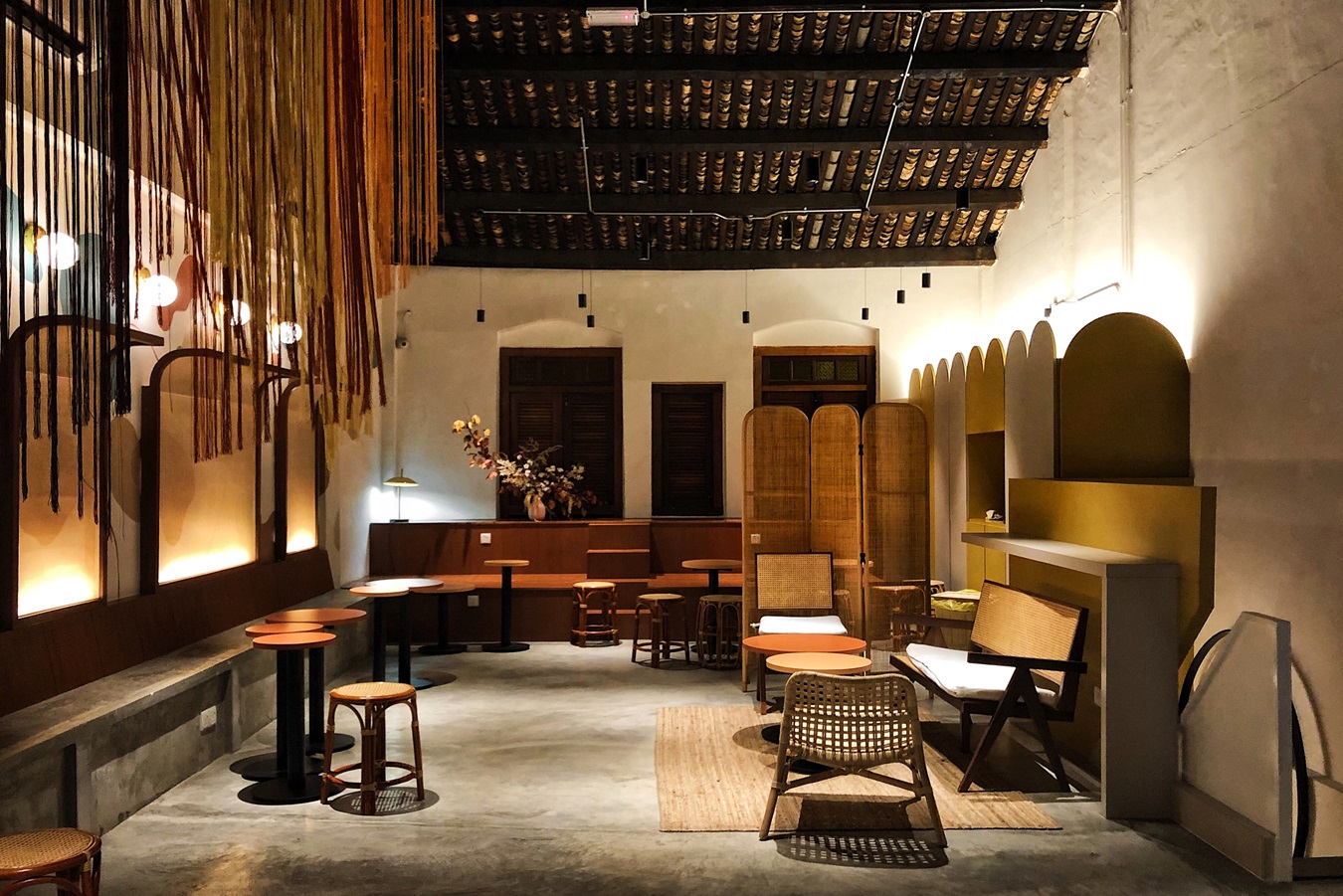 SHARE
SHARE
Why 60% of Restaurants Fail in the First Year—and How You Can Survive
Eka Prasetya (COO and Co-Founder ESB)
Starting a culinary business is often full of euphoria: a lively grand opening, the excitement of your first customers, and prayers for long-term success. But the reality isn’t always sweet.
According to a CNBC study, 60% of restaurants go bankrupt in their first year, and 80% close before their fifth year.
High operational costs, rapidly changing customer trends, and poor marketing strategies are often the main causes.
The big question: how can your restaurant survive when so many collapse within the first year?
Why So Many Restaurants Fail?
Many restaurant owners only focus on taste and decoration, while neglecting the business foundation. As a result, restaurants go bankrupt quickly, even if they were busy at the start.
Here are the main reasons:
1. Weak Operational Management
Many restaurants lack proper systems to manage inventory. Ingredients often get wasted due to poor recording, or run out suddenly during peak hours.
Without control, costs balloon and profit margins shrink. In the end, even high sales feel meaningless due to hidden cost leaks.
2. Ineffective Marketing Strategy
Promotions are often haphazard: massive discounts but poorly targeted, or campaigns that attract attention only at the beginning and then die out.
Without consistent digital marketing, customer traffic declines quickly. Restaurants may only be crowded during promotions, then empty on regular days.
3. Failure to Adapt to Consumer Trends
The culinary world moves fast. Menu trends, ordering methods, and lifestyle shifts change every year.
Restaurants that ignore delivery, cashless payments, or social media content will be abandoned by customers who prefer modern experiences.
4. Lack of Data and Planning
Too many business decisions rely on gut feeling: adding menu items because of a “hunch,” or offering discounts because “it feels necessary.”
But without data—such as which menu sells best, peak visit times, or who the repeat customers are—business strategies are prone to misdirection.
CNBC (2016) noted: “About 60% of restaurants fail in the first year, and 80% before the fifth year, mainly due to weak operational management and poor marketing strategies.”
Use the Formula: TC × APC
Illustration of TC vs APC. Image generated by AI
In the restaurant world, the sales formula is simple:
The problem is, maintaining both isn’t easy. A restaurant can fail if it can’t attract new customers (TC) or make them spend more (APC).
The Three Phases of Restaurant Growth
Restaurant Growth Phases. Image generated by AI
Running a restaurant requires different strategies for month one versus year two. Each growth phase has distinct challenges and priorities.
Generally, new restaurants experience three main phases:
- Survive (0–6 months): focus on traffic and awareness
- Growth (6–18 bulan): maintain repeat orders and increase spending
- Scale & Sustain (>18 bulan): optimize TC × APC for loyalty and expansion
The focus and strategy differ at each stage. This is what separates restaurants that merely survive from those that truly grow.
1. Survive Phase (0–6 Months)
The first six months are the most critical period in the journey of a restaurant.
In this phase, the main goal is not to pursue big profit, but to get as much traffic as possible.
Without customers coming, the restaurant cannot test whether the chosen menu, price, or positioning really matches the market.
The main focus in this phase is Total Check (TC) or the number of transactions. The restaurant must work hard so that the doors are always open for new customers. The ways can be:
- First Order Campaign: offer special promos for the first purchase, so people are interested to try without hesitation
- Multi-Channel Order: don’t only rely on dine-in. Make sure customers can order through various channels such as food delivery apps, QR ordering at the table, website, or even WhatsApp. The easier the access, the bigger the chance of transactions.
- Flash Sale in Quiet Hours: take advantage of non-prime time with value packages, for example at 14.00–17.00. This strategy helps fill seats that are usually empty
- Brand Awareness & Social Media Activation: use digital content to introduce the brand, build curiosity, and start embracing the audience
- Collect Customer Data: every transaction is an opportunity. Record phone numbers, menu preferences, and visit frequency. This data will become “ammunition” for retention strategy in the next phase.
The target in the Survive phase is not big profit, but to ensure there is enough traffic to build awareness, test product attractiveness, and prepare a customer database.
This foundation will later determine whether the restaurant can enter the next growth phase or stop in the first year.
2. Growth Phase (6–18 Months)
After passing the survival period, the restaurant enters the growth phase. At this stage, traffic usually starts to stabilize.
The challenge is no longer just bringing in new customers, but making them come back more often and spend more.
This is where the customer data collected in the survive phase becomes the most valuable asset.
The restaurant can start utilizing the database for retention, upselling, and cross-selling strategies that are more effective.
The main focus in this phase is to balance between Total Check (TC) or Number of Transactions and Average per Check (APC) or Average Transaction Value.
Strategies that can be carried out:
- Repeat Order & Retention: build loyalty programs, either in the form of points or digital stamp cards. Send automatic reminders via WhatsApp, email, or notifications for customers who haven’t visited for a long time.
- Upselling & Cross-Selling : offer add-ons such as extra toppings or upgrade size. Use bundle packages so customers feel more economical when buying in certain combinations, for example “2-person Value Package” is cheaper than buying separately.
- Customer Segmentation: separate customers based on behavior. New customers are given repeat order promos, active customers can be offered upsell, while dormant customers are given comeback vouchers.
It should be remembered the target in the growth phase is to keep the number of transactions stable while increasing the average spending per customer.
If successful, margins will improve, promotion costs become more efficient, and the restaurant begins to build a loyal customer base.
3. Scale & Sustain Phase (>18 Months)
Focus of Restaurant Growth Phase. Image created by AI
If the restaurant manages to pass the growth phase, usually there is already a strong customer base and a menu that has proven to be liked.
The next phase is Scale & Sustain, where the goal is no longer just to survive, but to build a long-term growth machine.
At this stage, the restaurant must optimize the synergy between TC and APC, while starting to think about expansion.
However, healthy expansion cannot be reckless—everything must be based on data.
Strategies that can be done:
1) Branch & Channel Expansion
Use traffic data, outlet performance, and customer demographics to choose new locations with minimal risk.
Also expand online channels starting from delivery, F&B marketplace, to website ordering so customers can access anytime.
2) Personalized Campaign
Utilize purchase history to create relevant promotions. For example, customers who often order in the morning can be offered breakfast packages.
Use automation to send messages at special moments, such as birthdays or holidays.
3) Integrated Multi-Branch Loyalty
Create a loyalty program that applies to all branches. Customers who buy at branch A can still redeem their points at branch B.
4) Collaboration & Co-Branding
Build hype with seasonal collaboration menus or pop-up events with other brands.
For example, a burger restaurant collaborates with a local craft beer at a music festival. This collaboration is not just promotion, but also positioning in the community.
5) Data-Driven Decision Making
Use data heatmaps to decide on new branch locations, menu analysis to determine items to promote or remove, and optimize the supply chain to reduce food waste.
In addition, conduct Customer Lifetime Value (CLV) analysis to focus on the most loyal customers who contribute the most.
The target in the Scale & Sustain phase is to create healthy and sustainable growth.
Restaurants that succeed in this phase usually not only survive, but also grow rapidly with measured and data-based strategies.
Build Restaurant Foundation with Integrated Solutions
The biggest mistake that causes many restaurants to go bankrupt is relying on instinct without data.
Whereas, business sustainability is very much determined by the ability to read customer behavior and turn it into real strategies.
This is where ESB comes as an F&B technology partner.
1. Automatic and Targeted Promotions
ESB POS is not just a cashier. This system can run flash sales in quiet hours, print automatic cashback vouchers for repeat orders, and capture customer data in real-time.
This data is directly connected to ESB Loop, a multi-branch loyalty app that maintains customer experience consistency.
2. Integrated Multi-Channel Support
Through ESB Order, restaurants can receive orders from various channels: QR ordering at outlets, WhatsApp, website, to all food aggregators in Indonesia.
Not stopping there, ESB Order also enables direct selling from social media—making restaurants able to sell directly to customers via links on Instagram, TikTok, or other digital platforms without intermediaries.
All these orders not only improve operational efficiency, but also enrich the customer database from day one the restaurant opens.
Data is directly synchronized with ESB Loop, so the restaurant has a strong foundation to build long-term retention.
3. Direct Selling dari Sosial Media
With ESB Order, restaurants can receive orders from various channels—QR ordering, WhatsApp, website, to all food aggregators in Indonesia.
Furthermore, restaurants can sell directly through Instagram or TikTok, connecting social media promotions with real transactions, while capturing customer data from the very first day.
4. Member Data-Based Marketing
All customer data, including demographics and menu preferences, is neatly stored.
As a result, marketing campaigns can be more personal: comeback vouchers for dormant customers, bundling promos for active customers, and new menu teasers for loyal communities.
5. AI for Upselling and Cross-Selling
Artificial intelligence features in ESB POS and ESB Order drive personalized upselling and cross-selling.
Supported by OLIN, ESB’s AI assistant, restaurants can know which menu is most effective for bundling while measuring promotion performance in real-time.
6. Proven in Major Brands
ESB has been trusted by various leading restaurant chains in Indonesia. This system supports cross-branch loyalty up to supply chain management, ensuring expansion runs smoothly.
7. Full Control with ESB Core (ERP)
For a more complex level, ESB Core provides a comprehensive overview: from operations, inventory, supply chain, to finance & accounting.
This is the strategic foundation for restaurant owners in making data-based business decisions.
Conclusion
The first year of a restaurant is indeed not easy. However, what distinguishes those who grow from those who fall is the foundation.
Restaurants that survive are not only those with delicious menus, but those that are able to:
- Manage customer data from day one
- Design targeted promotions
- Maximize transaction value
- And maintain operational efficiency while growing.
ESB helps restaurants achieve all of this. With integrated solutions, every transaction becomes valuable data, every customer has the potential to become loyal, and every new branch can grow in a measurable way.
Because in today’s culinary era, the winners are not only restaurants with the best taste, but also those with the best systems to survive and grow.
 SHARE
SHARE




